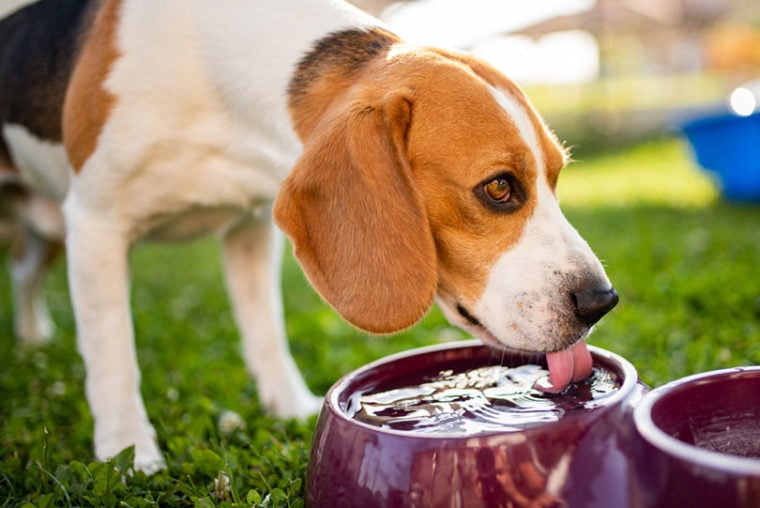
Click to Skip Ahead
With all the care and consideration we lend to the foods we give our dogs, we often forget that the most critical aspect of their diet is one we provide without an extra thought every single day—water. From cognitive functioning to proper digestion, it influences every system in the body. While dogs can go up to a week without food in emergencies, they’ll perish in only 2–3 days without water!
When you appreciate water’s importance, your dog’s disinterest in drinking enough can become rather concerning. Signs of low water intake require immediate investigation and, in many cases, a follow-up with a professional. If your pet shows physical and behavioral changes from dehydration, we’ll explain how to assess the situation and get your dog to drink water.
How to Get a Dog to Drink Water: 9 Easy Steps
Giving your dog enough water during the day may seem straightforward, but it’s surprisingly easy to get wrong. Simple factors like keeping the water clean and accessible may require more effort than you realize, leading to even healthy dogs not having enough fluids. Sometimes, dogs might need a little extra push to encourage proper drinking habits. Whatever the situation, here are nine easy steps to get your dog to drink water.
1. Keep Bowls Clean and Easy to Reach
Making water available and enticing is an essential step in fixing any drinking issue, and that could take more than giving your dog one bowl next to the food dish. Depending on the size of your home and the number of pets, you may need to provide several dishes in strategic positions. Consider flights of stairs, doorways and obstructions, and your dog’s daily routine to find the best spots.
Once the bowls are in place, you have to consider maintenance. It’s not enough to keep the bowls full of fresh water. They also have to stay clean. Dogs may refuse to drink if there’s any off-putting contamination and only find relief if you clean their dishes with soap and water.
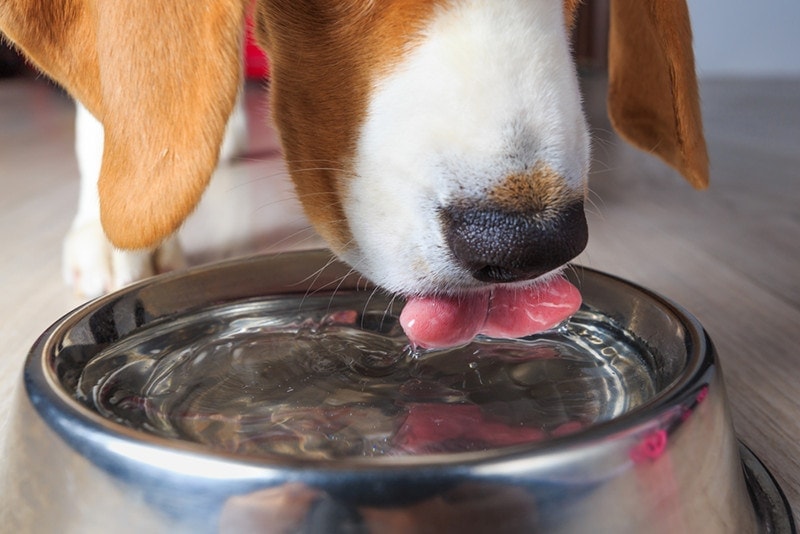
2. Use a Variety of Bowls
Sometimes the issue isn’t the water quality but the delivery system. Water bowls come in all shapes, sizes, and materials, and your dog might not like the style you gave them. You may want to gather a few types to cycle out, such as glass, ceramic, or stainless steel dog bowls. Sizing up can also help. It may take some experimentation and a few styles around the house, but eventually, you’ll dial in your dog’s preference.
3. Offer Filtered Water
Give your dog filtered water rather than a cold drink straight from the tap. Removing treatment chemicals and contaminants water may pick up on the way to your faucet is always a healthier option. And when you need to get your dog to drink more water, improving the taste by removing flavor-altering additives like chlorine could be the answer.
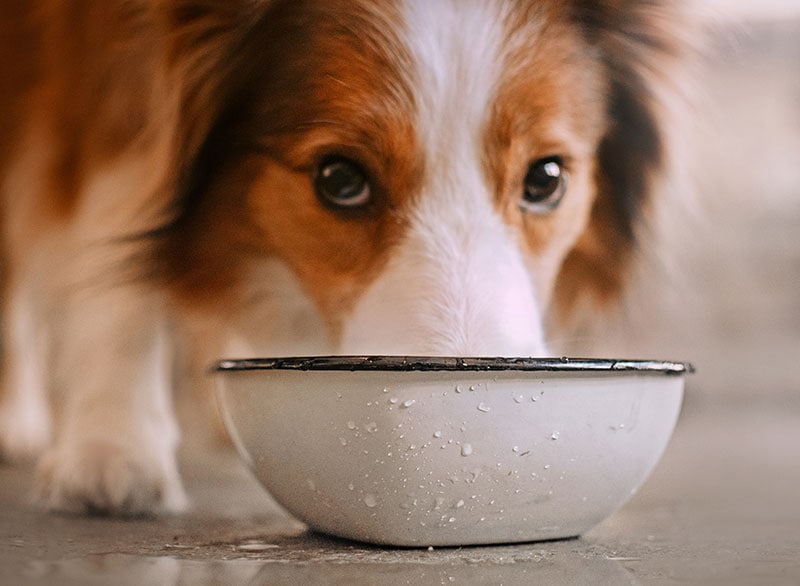
4. Add Ice
Water should be as appealing as possible, and that’s usually only possible when it’s cold. Provide water from the fridge or add a few ice cubes to the bowl to boost the refreshment. Alongside the cooling sensation, the crunchiness of ice is enjoyable for many dogs.
5. Change Water More Frequently
Stagnant water in a dog bowl often becomes a breeding ground for bacteria and other microbes. It can eventually take on a foul smell and taste, causing your dog to turn their nose at the bowl, lest they risk getting sick from drinking. Water needs replacement at least once daily. If you think you aren’t doing enough, try increasing the number of water changes and bowl cleanings to see if your dog’s drinking habits improve.
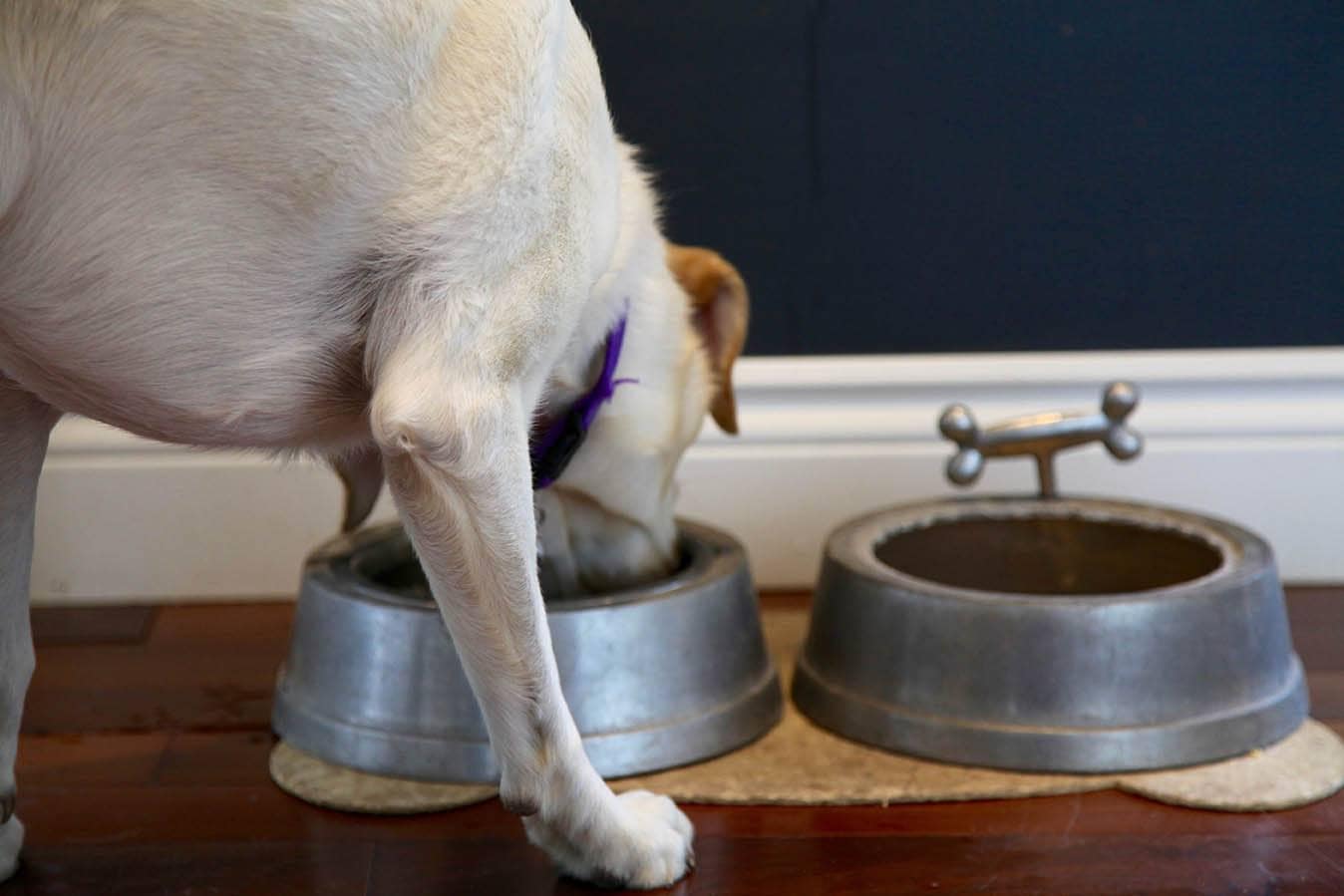
6. Add Water to the Food
If your dog’s appetite hasn’t died down with their thirst, you could use that to your advantage. Switching to wet dog food will reduce their need for extra fluids, but you can also add water to their kibble to sneak in hydration. Add water to a bowl of dry dog food, mix it to distribute the moisture evenly, and place it in the fridge to give it time to absorb. Start with a little water, and gradually increase the amount to acclimate your dog to the new routine.
7. Flavor the Water
Even the freshest water may not entice your dog enough to drink more. For finicky pups, a little flavoring can go a long way. While many popular options wouldn’t be tempting for people, several additions can boost the experience for your dog, including chicken broth, tuna juice, fresh fruits, or vegetables.

8. Offer Water by Hand
Dogs that have fallen ill will need a helping hand to stay hydrated. Offering water by hand makes it as easy as possible for your dog to drink while encouraging them to do so, as they will be more likely to trust whatever you offer directly. You can also give them sips of water from a bottle. Portioning it in small amounts like this is ideal for mildly dehydrated dogs because rapid drinking can cause them to vomit and exacerbate the situation.
9. Invest in a Fountain
A complete format change may be necessary when nothing else seems to work. A pet fountain like the PetSafe Drinkwell fountain is a low-cost solution to several issues that may keep your dog from drinking enough water from their bowl.
With the water cycling continuously through various filters, it can stay aerated and fresh longer than filtered water in a dog bowl. The sound and motion of the waterfall are also attention-grabbing, further helping to draw pets in for a drink. The pouring spout positions fresh water at several heights, allowing dogs and cats of different sizes and ages to drink comfortably. Dogs will have an easier time drinking, and you’ll have less daily maintenance to worry about.
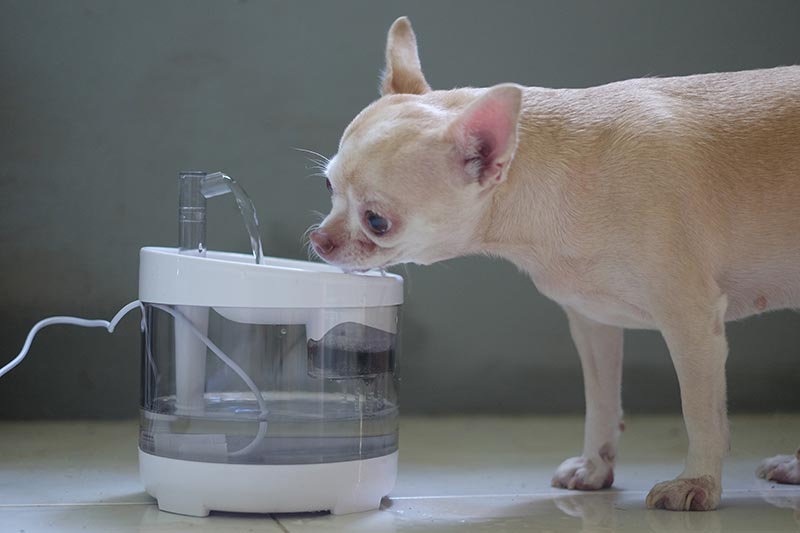
Why Isn’t My Dog Drinking?
Reliable access to clean, fresh water is essential for keeping any dog hydrated, but it isn’t the only reason they’ll change their drinking habits. If you’ve done everything to appeal to your dog’s need to drink, there could be a deeper issue driving their behavior, including:
Underlying health problems often accompany additional physical and personality changes. Sometimes, different water-drinking habits are a simple function of being in a new place or your dog’s body slowing down with age. But if you’re uncertain about what’s causing your dog to avoid drinking water, an immediate follow-up with your vet is a safe and practical move.
How Much Water Should My Dog Drink?
A dog’s body consists primarily of water, making its replenishment a critical aspect of their daily routine. The prevailing guideline is that dogs should consume roughly one ounce of water for every pound of body weight.
The daily requirement may change according to situational variables like activity level and outdoor temperature. Dogs that eat dry food also need more water, while those that eat wet dog food, consisting of roughly 80% water, will demand significantly less.
The general rules around how much water a dog should drink won’t dictate how much you supply. Dehydration is the central concern. Dogs are intelligent enough to know how to regulate their water consumption, making over-indulgence a low risk. Water intoxication is rare and typically occurs from swimming or splashing in water. As long as you always keep fresh, clean water available, your dog can maintain the perfect hydration level.
Signs of Dehydration
Water is tied to numerous systems and bodily functions, making its absence apparent in several ways.
Checking your pet’s gums for unusual capillary refill time or testing skin elasticity for slow recovery are two easy ways to assess whether your dog is dehydrated. Early identification and treatment are crucial since dehydration can progress to organ failure in severe cases. Issues like extreme dehydration and heatstroke are medical emergencies requiring the help of a vet to replace lost fluids.
Conclusion
Whether exercising outside or hanging around the house, dogs must always stay hydrated to stave off severe health issues. While we may be able to spot the signs of dehydration, dogs can’t come out and say they need help. As responsible owners, we can only be responsive by monitoring all aspects of our dog’s diet, including water consumption. Consider your dog’s drinking habits, and follow these tips if they need extra help to stay safe and healthy.
Featured Image Credit: Przemek Iciak, Shutterstock









